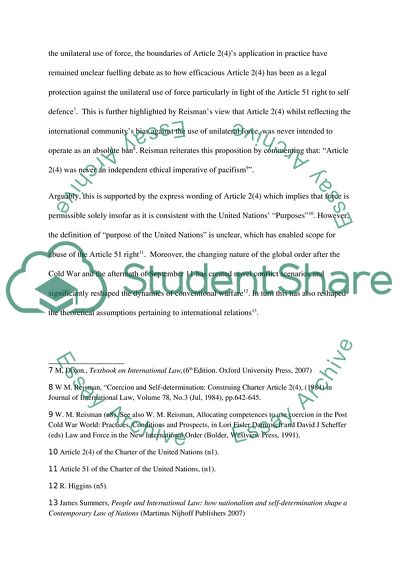Cite this document
(“Explain and comment upon the proposition that the scope of the Essay”, n.d.)
Explain and comment upon the proposition that the scope of the Essay. Retrieved from https://studentshare.org/miscellaneous/1574590-explain-and-comment-upon-the-proposition-that-the-scope-of-the-doctrine-of-self-defence-in-international-law-is-dependent-on-reading-the-united-nations-charter-article-51-in-the-light-of-customary-international-law
Explain and comment upon the proposition that the scope of the Essay. Retrieved from https://studentshare.org/miscellaneous/1574590-explain-and-comment-upon-the-proposition-that-the-scope-of-the-doctrine-of-self-defence-in-international-law-is-dependent-on-reading-the-united-nations-charter-article-51-in-the-light-of-customary-international-law
(Explain and Comment Upon the Proposition That the Scope of the Essay)
Explain and Comment Upon the Proposition That the Scope of the Essay. https://studentshare.org/miscellaneous/1574590-explain-and-comment-upon-the-proposition-that-the-scope-of-the-doctrine-of-self-defence-in-international-law-is-dependent-on-reading-the-united-nations-charter-article-51-in-the-light-of-customary-international-law.
Explain and Comment Upon the Proposition That the Scope of the Essay. https://studentshare.org/miscellaneous/1574590-explain-and-comment-upon-the-proposition-that-the-scope-of-the-doctrine-of-self-defence-in-international-law-is-dependent-on-reading-the-united-nations-charter-article-51-in-the-light-of-customary-international-law.
“Explain and Comment Upon the Proposition That the Scope of the Essay”, n.d. https://studentshare.org/miscellaneous/1574590-explain-and-comment-upon-the-proposition-that-the-scope-of-the-doctrine-of-self-defence-in-international-law-is-dependent-on-reading-the-united-nations-charter-article-51-in-the-light-of-customary-international-law.


